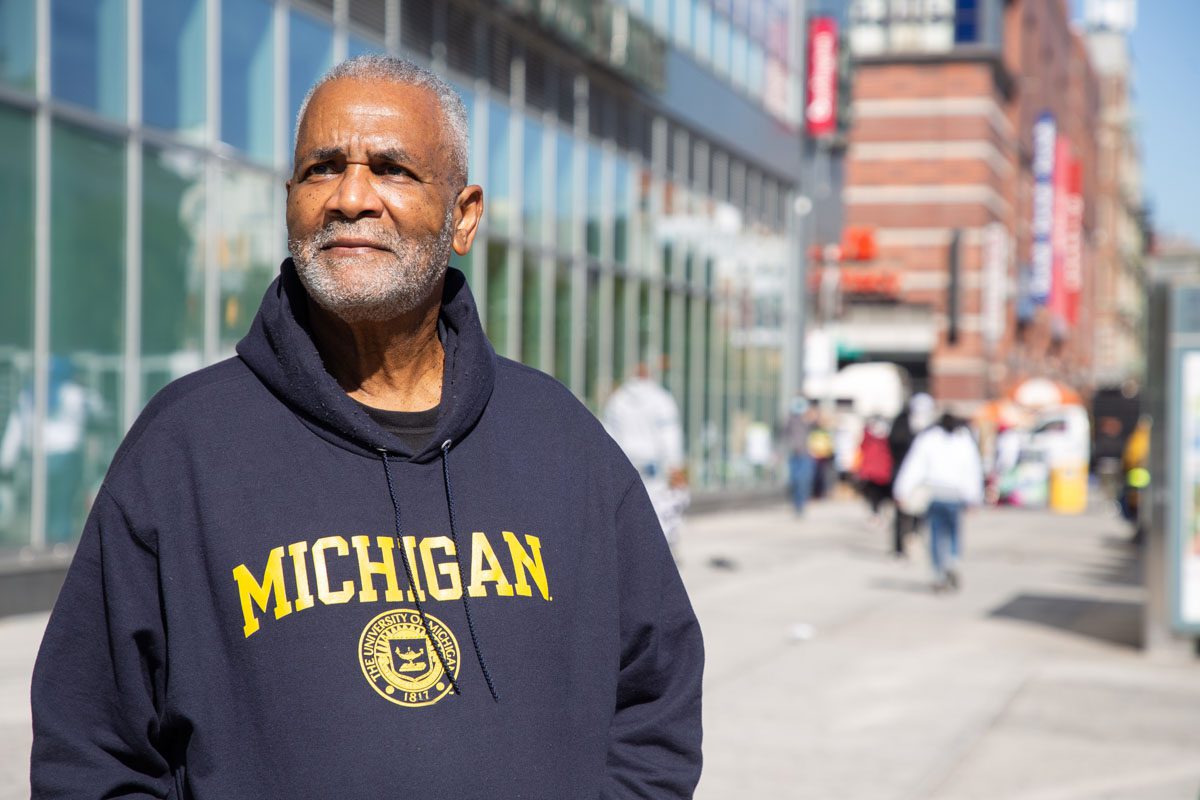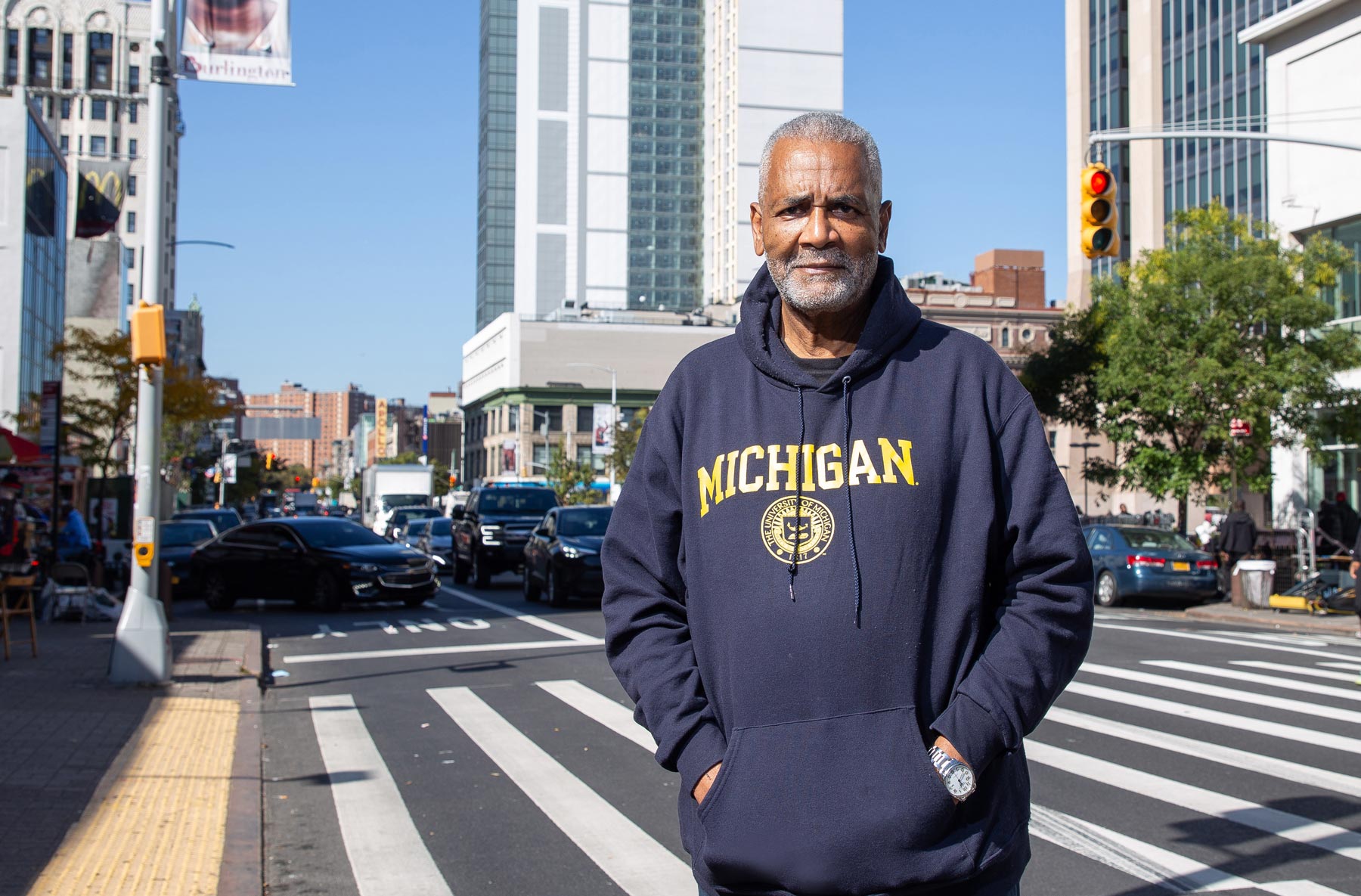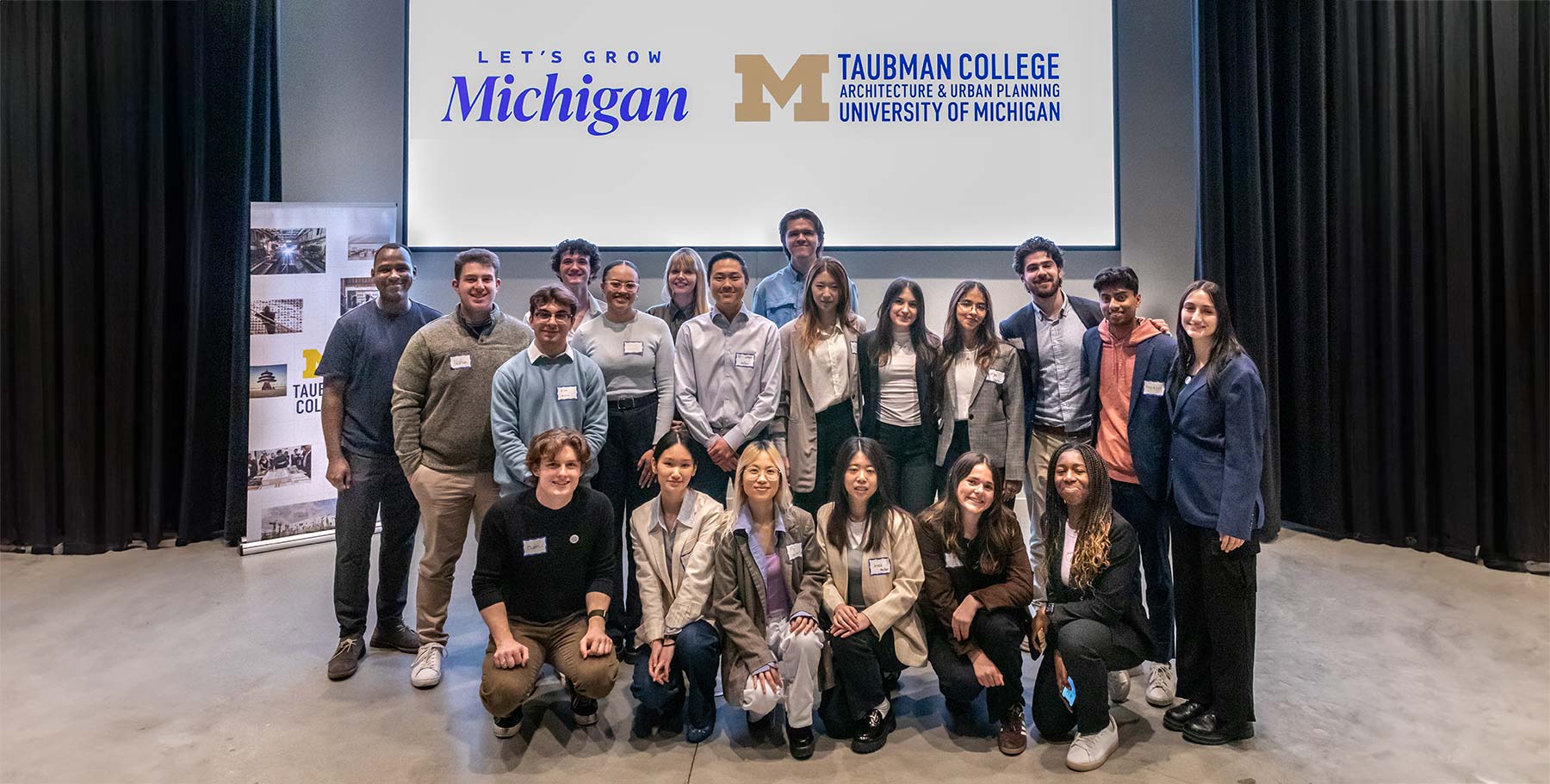By Amy Spooner
The Harlem and Bronx of Ken Knuckles’s childhood looked very different than the Harlem and Bronx of today. Knuckles, B.S. ’73, is a big reason why.
The passion for equity that fueled his career took root in the times he grew up in. He was raised in adjacent Mt. Vernon, New York, during the height of the Civil Rights Movement and amid the middle-class migration from the cities to the suburbs. As a result of neglect and many years of economic disinvestment, Harlem — the once-vibrant epicenter of Black culture — fell into disrepair. The Bronx, for similar reasons, did too — long before the country took notice during the 1977 World Series when broadcaster Howard Cosell intoned, “The Bronx is burning,” as he observed fires from abandoned properties near Yankee Stadium.
In 1965, at the height of the Civil Rights Movement, Knuckles joined the Army at the age of 17. He later earned an architecture degree at Michigan and a law degree at Howard University during the 1970s, a time when he says racial and economic equity was a chief concern on the country’s landscape.
“I always thought that my lot in life, given the opportunities that I’ve been given, was to be an activist in the realm of economic opportunity,” he says. “There are people who do heroic work in the streets. But it’s left to those of us who have access to the lever of government, and those of us who have access to capital, to formulate policy that is in furtherance of the activism that is being executed in the streets.”
Knuckles has leveraged access to both the government and capital during his career, with the goal of making New York’s neighborhoods — especially those that are home to the city’s most vulnerable populations — better.
Most recently, during his 15-year tenure as the president and CEO of the Upper Manhattan Empowerment Zone (UMEZ), Knuckles focused on economic development as a catalyst for job creation — the idea being that local jobs for local residents result in housing security and stronger neighborhoods.
UMEZ is one of nine Empowerment Zones that the Clinton administration created in 1994 to assist areas that had the highest concentration of poverty based on the 1990 census. Then-Representative Charles B. Rangel, the long-serving Congressman representing Harlem and its adjacent neighborhoods, convinced New York City Mayor David Dinkins and New York Governor Mario Cuomo to each match the federal government’s $100 million appropriation to New York City; as a result, the Bronx Overall Economic Development Corporation had a seed fund of $50 million and UMEZ’s was $250 million.
As UMEZ began its mission of job creation through private investment, “the pivotal decision was to not grant or gift all the funds, but rather to lend a good portion of them,” says Knuckles, who took the helm of the organization in 2003. “As a result, our Empowerment Zone was not only the largest and most successful, as a result of repaid loans, it is still in existence.”
By the time Knuckles retired in 2018, UMEZ had invested almost $242 million as loans for mixed-use real estate development, commercial businesses, and small-business enterprises; tax-exempt bonds for real estate development projects; and grants focused on arts and culture and workforce development. The investments have leveraged more than $1.1 billion of private capital invested in Upper Manhattan, which, in turn, has created nearly 10,000 direct jobs.
“Without the investment that the Empowerment Zone has made, Harlem and Upper Manhattan would not have moved forward in the way that they have,” says Knuckles. For example, Knuckles spearheaded a $10 million loan behind substantial investment from Goldman Sachs to build a Marriott hotel on Harlem’s iconic 125th Street. When it is completed, it will be the first major-chain hotel in Harlem in more than 50 years — and will bring a couple hundred jobs with it. “The average hotel worker in New York City earns $53,000 a year. Those are good jobs. Our mission is to make sure as many Upper Manhattan residents as possible get those jobs,” Knuckles says.

At UMEZ, Kunckles focused on economic development as a catalyst for creating jobs that benefit local residents.
He acknowledges, however, that forward progress can be controversial. The hotel soars above the historic Victoria Theater; a Banana Republic outlet sits next to the legendary Apollo Theater. With the influx of commercial development, housing prices and rents in Upper Manhattan have skyrocketed. And the ensuing influx of non-traditional residents, namely affluent Caucasians, has caused critics to lament the gentrification of the area.
“The challenge is to now make sure that those who weathered the storm can afford to be there to enjoy the resurgence. But I believe that challenge is better than the ones we faced when I left for the University of Michigan in 1969 — when things in these neighborhoods were really dire,” Knuckles says.
He points to the 2017 opening of a Whole Foods in Harlem as an example of how commercial development can enhance a community. While the corporation did not apply for UMEZ assistance — “It was private development that I couldn’t have stopped if I’d wanted to,” Knuckles notes — it did talk with Knuckles about employment opportunities for local residents, as well as how to create an in-store presence for local entrepreneurs like Sylvia’s Restaurant. “They’ve been good neighbors,” Knuckles adds.
While not the focus of the Empowerment Zone’s investments, housing also plays a major role in neighborhood revitalization. Knuckles saw that relatively early in his career, when he left his role as counsel to the New York City Civil Service Commission to join the city’s Department of Housing Preservation and Development (HPD). Just two years later, in 1987, he jumped at the chance to become deputy Bronx borough president under Fernando Ferrer. A decade after that infamous World Series, the Bronx was no longer burning, “but it was still smoldering,” says Knuckles. Thousands of “in rem” housing units lay abandoned, with the city as de facto landlord.
Ferrer tasked Knuckles to work with HPD on programs targeting the borough’s nearly 30,000 units of abandoned housing. A year later, when Mayor Ed Koch reallocated $5 billion from the city’s capital infrastructure budget toward housing restoration — a move necessitated by the Reagan administration’s disinvestment in urban housing nationwide — “we made it our business to be first in line,” Knuckles says. He and his team plotted out critical areas where they could align city revitalization funds with in rem housing in the borough. The first target: the I-95 corridor, heavily used by commuters, truckers, and tourists alike. “Traveling through the Bronx on I-95, you’d see nothing but gutted-out buildings,” Knuckles notes. “If we were going to reverse the ship, that image needed to change.” Today, with some 200,000 units of rehabilitated housing, “the Bronx still has challenges, but abandoned housing is no longer one of them,” he says.
A year before Knuckles became the head of the Upper Manhattan Empowerment Zone, he was appointed vice chair of the New York City Planning Commission; he still serves in that role today. It has provided an important lens through which to see the bigger picture of equity in New York. “The solemn truth of development in New York is that you cannot build housing, certainly privately, for only low-income people. It’s just not financially viable. So in order to build housing with affordability, you’ve got to cross-subsidize affordable units with market-rate units.”
He points to the city’s zoning laws as exemplars, noting that developers cannot have their land parcels up-zoned unless they provide at least 25 percent of the planned units at a rate that is affordable to the city’s average median income earner. “I think New York City has done more than virtually any other city in the United States to offset the impact of gentrification by providing housing subsidies,” he says. Yet at the same time, he gets the argument, affordable for whom?
“I certainly understand that it’s a real challenge, and to some degree a byproduct of the activity that UMEZ has stimulated in Upper Manhattan,” Knuckles says. “But I don’t think it’s a zero-sum game. In order to have renewal, you need economic integration — and you need some level of gentrification to bring that about.”





